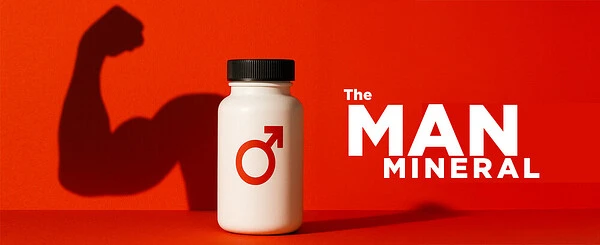One Day On, One Day Off for Hardcore Lifters
Author: Christian Thibaudeau
Introduction
For those passionate about intense weightlifting, adopting an every - other - day training regime can be the key to optimizing gains. This article delves into the reasons behind this approach and provides a comprehensive guide on how to plan your training and nutrition accordingly.
The Logic Behind Every - Other - Day Training
Quality over Quantity of Workouts
To achieve maximum strength or muscle growth, it is crucial to prioritize high - quality workouts over mediocre ones. While many lifters believe that any workout is better than none, this is a misconception. A subpar workout often indicates that either the muscles or the nervous system have not fully recovered. Subjecting the body to additional stress in such a state can lead to a downward spiral, as the body struggles to catch up and may not be able to fully recover, let alone adapt positively. To eliminate these ineffective workouts and enhance performance, it is advisable to rest the day before each workout, thus following a one - day on, one - day off pattern.
Why an Every - Other - Day Split?
Protein Synthesis: Protein synthesis in trained muscles reaches its peak approximately 24 hours after a workout and remains elevated for 36 hours. This timeframe encompasses the rest of the training day and the subsequent day. By taking a day off post - workout, while simultaneously increasing protein intake and engaging in non - strenuous physical activity, one can fully capitalize on this heightened protein synthesis.
Reduced Risk of Burnout: The primary advantage of every - other - day training is the ability to train with maximum intensity while significantly minimizing the risk of training burnout.
Training Frequency: Employing a whole - body training split within this framework allows for a high training frequency for each muscle, despite a moderate overall training frequency. As an alternative, a lift - specific program can be implemented, such as focusing on bench press and assistance exercises on day one, squat and assistance on day two, and so on.
Results and Well - being: Training every other day (3 - 4 workouts per week) does not necessarily lead to a decline in results. In fact, some individuals achieve similar results, while others experience significantly superior outcomes. Moreover, this approach enhances overall well - being, reduces aches and pains, and provides more energy and time for other activities.
EOD: Intended for Dedicated Lifters
The Growth Equation
It is a well - known fact that workouts stimulate the body to grow, but the actual growth occurs during rest and proper nutrition. However, many individuals who espouse this principle still train 5 - 6 days a week, often performing 30 sets per workout. While it is possible to train 5 - 6 days a week with extremely low volume, doing so with moderate to high volume and maintaining a high level of effort in each set is not conducive to optimal progress and well - being. Before the advent of steroids, lifters typically trained 3 days a week (Monday, Wednesday, Friday) and were able to build substantial strength and size. The practice of training 5 - 6 days a week, with body part splits and increased volume, may be associated with the use of steroids. Although it is possible for young, unburdened individuals with relatively low strength levels to train 5 - 6 days a week and progress, in the real - world context of adulthood, most people struggle to sustain such a schedule. Those who manage to do so often do not train with sufficient intensity. It is important to distinguish between training frequently and training hard. The every - other - day training approach is specifically designed for those who train with extreme intensity, to the extent that they require a day off after a workout to ensure a productive training session the next time.
Systemic Effects Of Training
Beyond Local Fatigue
Dedicated lifters may question why they cannot train hard two days in a row if they are not targeting the same muscles. While local fatigue in trained muscles is a factor, each workout also has systemic effects that can negatively impact performance. For instance, increased cortisol levels can disrupt whole - body protein synthesis and increase protein breakdown. These systemic effects can also affect one's mental state and motivation. The intensity of a workout, determined by factors such as volume, the effort exerted in each set, the amount of weight used, and the exercise difficulty, directly influences the level of systemic fatigue. Lifters who primarily perform isolation or machine exercises with light to moderate weights, without pushing to their limits, experience less systemic stress. This further emphasizes that the one - day on/one - day off approach is intended for those who train at a level that necessitates a day of rest.
It's Not an Off Day. It's a Peaking Day
Changing the Mindset
For those who struggle with the idea of taking a day off, it is beneficial to shift the mindset and view this day as a "peaking day." The day before a workout can be utilized as a strategic tool to enhance performance during the training day. To maximize muscle growth and gain an edge in heavy lifts, one may even consider increasing calorie and carbohydrate intake on non - workout days.
The Best Way to Organize Your Workouts
Muscle Stimulation Frequency
To ensure optimal muscle growth, each muscle should be stimulated, at least indirectly, twice per four - workout cycle. Given that there are four workouts in an eight - day period, using a traditional bodybuilding - style body part split may result in waiting too long between sessions for each muscle to grow effectively.
Whole - Body Workouts
Whole - body workouts are the optimal choice. There are several options for structuring these workouts:
Two Different Sessions:
Day 1: WB 1
Day 2: Off
Day 3: WB 2
Day 4: Off
Day 5: WB 1
Day 6: Off
Day 7: WB 2
Day 8: Off
Four Different Sessions:
Day 1: WB 1
Day 2: Off
Day 3: WB 2
Day 4: Off
Day 5: WB 3
Day 6: Off
Day 7: WB 4
Day 8: Off
Three Different Sessions:
Day 1: WB 1
Day 2: Off
Day 3: WB 2
Day 4: Off
Day 5: WB 3
Day 6: Off
Day 7: WB 1*
Day 8: Off
- The next cycle would commence with the WB 2 workout.
Each workout should be built around four multi - joint exercises (one squat, one press, one pull, one hinge), with the option of adding 1 - 2 isolation exercises for muscles that need additional attention.
How to Eat
Goal - Oriented Nutrition
If the objective is to gain muscle and strength, a caloric surplus is necessary. However, this does not imply excessive fat gain. To build muscle, the body must be nourished adequately. Consuming a surplus, especially from carbohydrates, creates an ideal physiological state for growth.
Non - Workout Day Nutrition
The primary purposes of non - workout days are to maximize the growth from the previous day's workout, load the muscles with glycogen and water, and facilitate systemic recovery for the next training session.
Carbs: The caloric surplus on non - workout days should predominantly come from carbohydrates. Carbs create an anabolic environment by reducing cortisol levels and increasing mTOR, IGF - 1, and insulin. They also lower adrenaline, improving sleep quality and preventing beta - adrenergic downregulation (a major cause of training burnout). Additionally, carbs replenish muscle glycogen and draw water into the muscles, while also sparing protein.
Protein: Protein is the second most important nutrient. After a workout and with the help of carbs, the body is in an anabolic state, but sufficient protein is still required to fully utilize this state. Approximately 1 gram per pound of bodyweight is sufficient to maximize growth. MD Protein (available on Amazon) can be used to meet this requirement.
Fat: Fat intake should be kept relatively low to accommodate more carbs. Aim for 0.25 grams per pound of bodyweight, with an emphasis on omega - 3 fatty acids and mono/polyunsaturated fatty acids. Consume whole, unprocessed foods and consider supplementing with a high - quality product like Flameout DHA - Rich Fish Oil (available on Amazon).
Training Day Nutrition
Calories, particularly from carbs, should be slightly lower on training days. Carbohydrates should be concentrated around the workout (before, during, and after) and in the last meal of the day. Surge (available on Amazon) is recommended for training. Keep carb intake lower in other meals and consume some carbs at night to reduce cortisol. The amount of carbs on both non - workout and training days should be adjusted according to specific goals, such as maximum muscle/strength without concern for fat gain, high - rate growth with some fat gain accepted, significant growth with minimal fat gain, or some muscle growth with no fat gain. Carb intake on non - workout days should be approximately 50% higher than on training days (e.g., 200 grams on training days, including the workout nutrition drink, and 300 grams on non - workout days). Protein intake can be slightly higher on training days, and fat intake can also be increased slightly to support hormone production and nervous system function.
Stimulate, Then Grow
The Yin and Yang of Training
Training and recovery are two opposing yet complementary processes. During training, glycogen and ATP are depleted, and muscle tissue is broken down. Simultaneously, catabolic hormones such as cortisol and adrenaline increase. In the recovery phase, the body stores glycogen and ATP, increases protein accrual to the muscle tissue, and anabolic hormones like IGF - 1 and insulin rise. The body is not efficient at performing these two opposite functions simultaneously. If a second workout is introduced during the recovery phase of the previous one, the recovery process must be halted during the workout and then restarted. This often leads to a decrease in adaptation to one or both workouts. The every - other - day approach represents the most efficient way to train and achieve growth.





